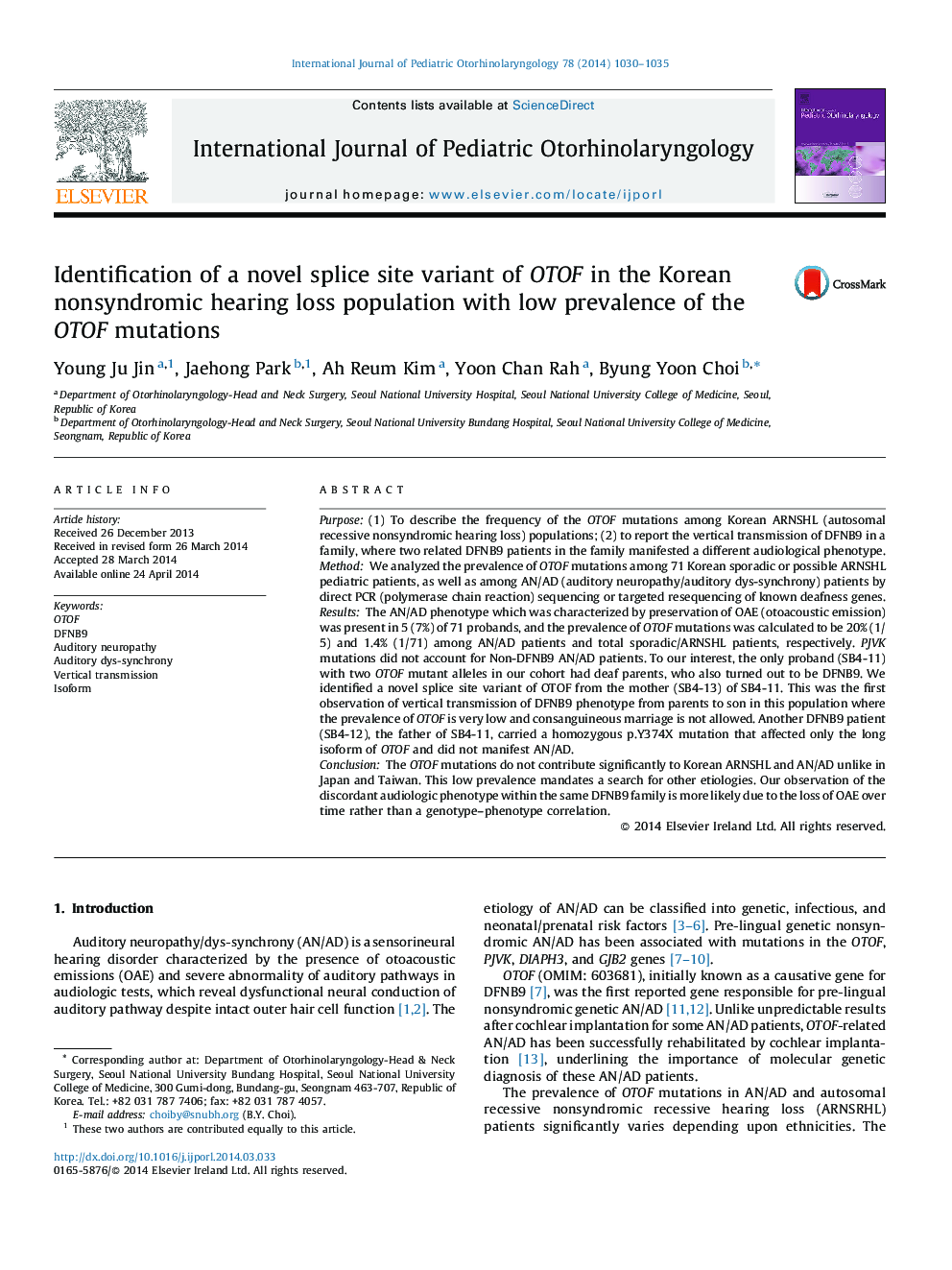| کد مقاله | کد نشریه | سال انتشار | مقاله انگلیسی | نسخه تمام متن |
|---|---|---|---|---|
| 4112558 | 1606006 | 2014 | 6 صفحه PDF | دانلود رایگان |

Purpose(1) To describe the frequency of the OTOF mutations among Korean ARNSHL (autosomal recessive nonsyndromic hearing loss) populations; (2) to report the vertical transmission of DFNB9 in a family, where two related DFNB9 patients in the family manifested a different audiological phenotype.MethodWe analyzed the prevalence of OTOF mutations among 71 Korean sporadic or possible ARNSHL pediatric patients, as well as among AN/AD (auditory neuropathy/auditory dys-synchrony) patients by direct PCR (polymerase chain reaction) sequencing or targeted resequencing of known deafness genes.ResultsThe AN/AD phenotype which was characterized by preservation of OAE (otoacoustic emission) was present in 5 (7%) of 71 probands, and the prevalence of OTOF mutations was calculated to be 20% (1/5) and 1.4% (1/71) among AN/AD patients and total sporadic/ARNSHL patients, respectively. PJVK mutations did not account for Non-DFNB9 AN/AD patients. To our interest, the only proband (SB4-11) with two OTOF mutant alleles in our cohort had deaf parents, who also turned out to be DFNB9. We identified a novel splice site variant of OTOF from the mother (SB4-13) of SB4-11. This was the first observation of vertical transmission of DFNB9 phenotype from parents to son in this population where the prevalence of OTOF is very low and consanguineous marriage is not allowed. Another DFNB9 patient (SB4-12), the father of SB4-11, carried a homozygous p.Y374X mutation that affected only the long isoform of OTOF and did not manifest AN/AD.ConclusionThe OTOF mutations do not contribute significantly to Korean ARNSHL and AN/AD unlike in Japan and Taiwan. This low prevalence mandates a search for other etiologies. Our observation of the discordant audiologic phenotype within the same DFNB9 family is more likely due to the loss of OAE over time rather than a genotype–phenotype correlation.
Journal: International Journal of Pediatric Otorhinolaryngology - Volume 78, Issue 7, July 2014, Pages 1030–1035